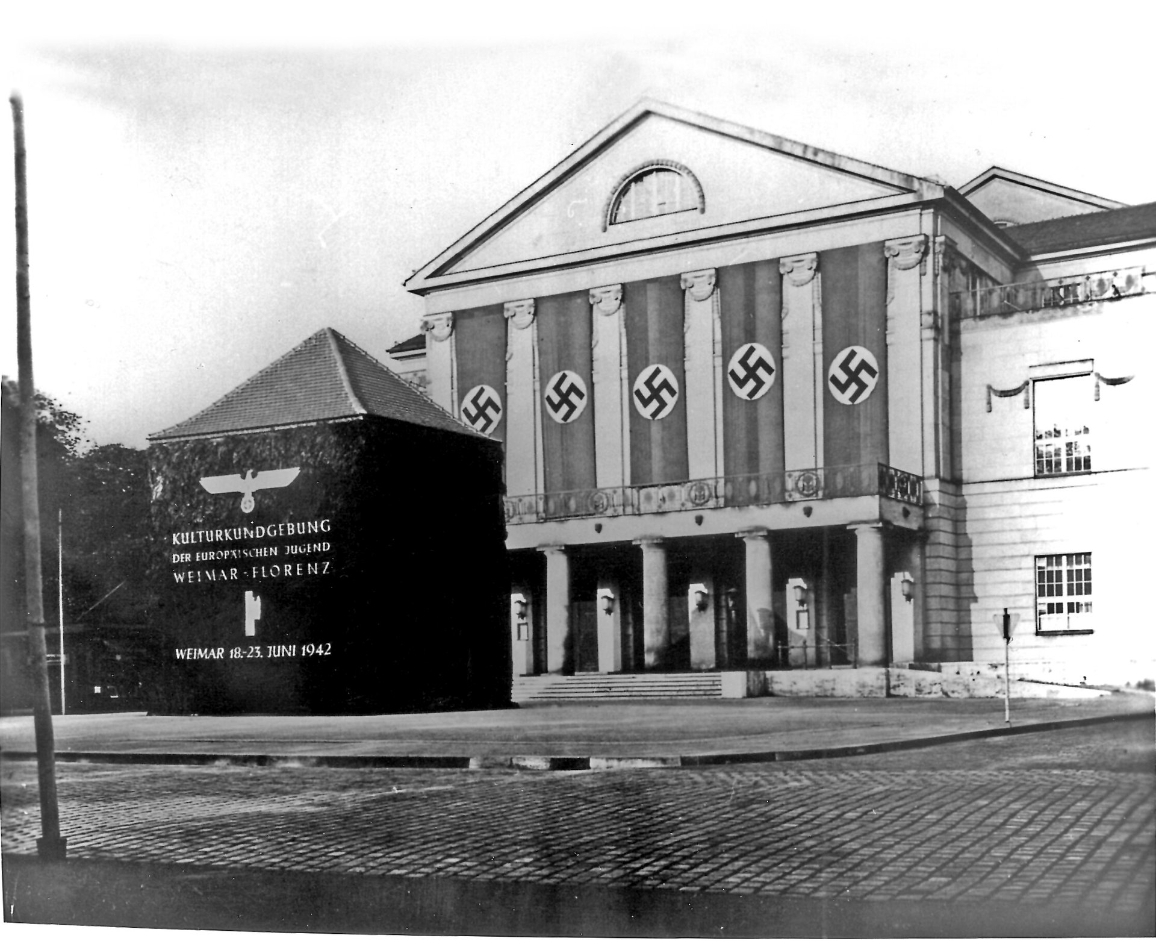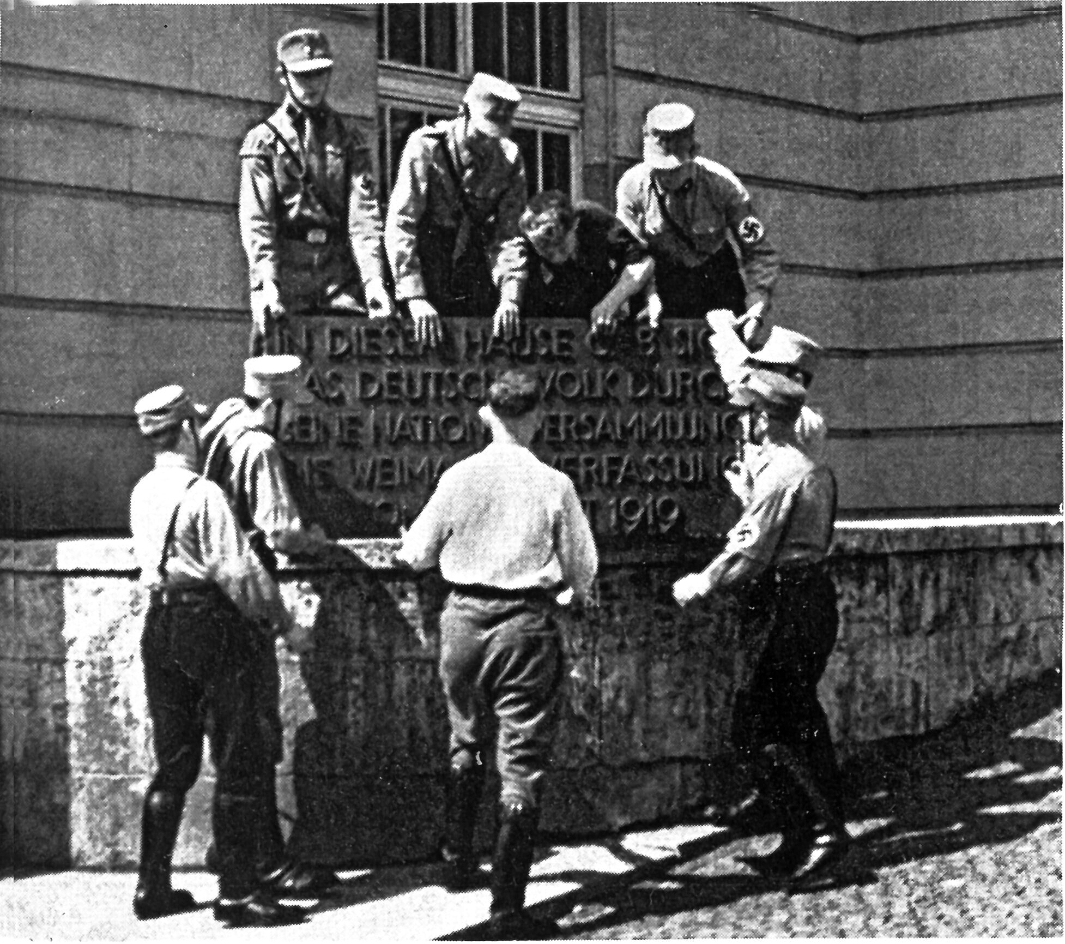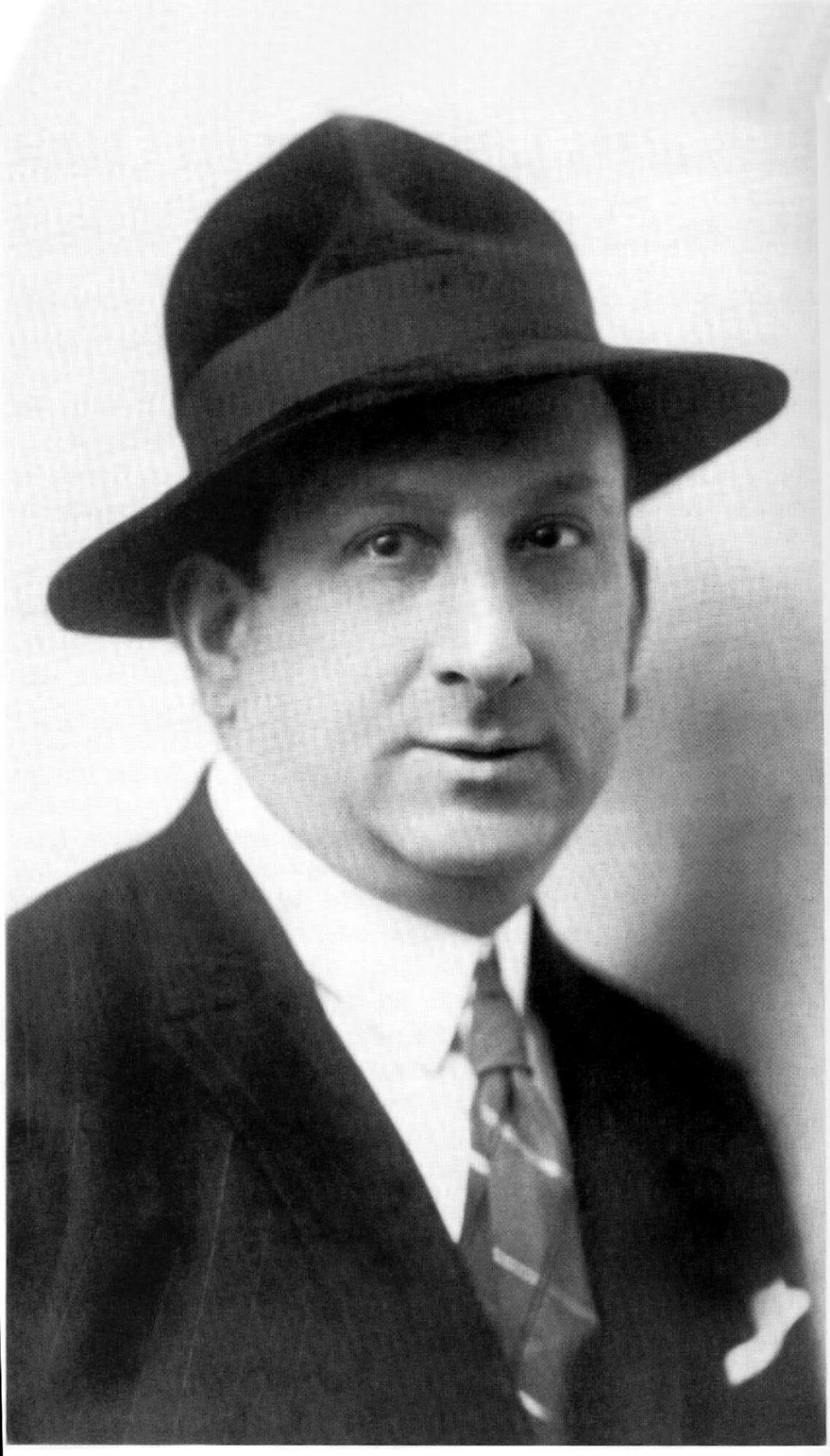

Founded in 1791 under Goethe's direction, thecourt theatre was given the name Deutsches Nationaltheater (DNT) in 1919 when the National Assembly met here and adopted the constitution ofthe Weimar Republic. A plaque designed by Walter Gropius commemorating the adoption of Germany's first democratic constitution was removed by SA members in March 1933. A replica of the plaque canbe seen to the left of the entrance today. The National Socialists attempted to utilise the DNT, thesite of Weimar Classicism, for their goals and tooverride its republican past. In 1926, the NSDAP held its first Reich Party Congress here after its re-establishment in the presence of Hitler. Many other party events followed. In particular, the tenth anniversary of the Reich Party Congress in 1936 was celebrated with lively public participation. Crowds gathered in front of the theatre to cheer on their "Führer".
Theatre operation
During the Nazi era, Hitler's confidant Hans Severus Ziegler acted as general director. An advocate of the"blood and soil" ideology, he banned plays by Jewish andpolitically unpopular authors from the repertoire. He also campaigned vehemently for the dismissal of "non Aryan"actors and musicians. The SS guards of the nearby Buchenwald concentration camp, on the other hand,were courted as an audience. The best seats were reserved for them in the C7 theatre series. The DNT alsogave several guest performances in the SS casino in Buchenwald. Hitler, who wanted to develop the Weimar National Theatre into a leading stage in the German Reich, not only supported it financially, but alsoattended numerous opera and operetta performances.The centre box on the first tier was redesigned especially for him and decorated with a swastika ceiling hanging over the balustrade. In the early 1930s, the ensemble included the actress Emmy Sonnemann, who later became Hermann Göring's wife. The theatre had toclose in September 1944 and was used as anarmaments factory by Siemens & Halske. The building was burnt down in an air raid on 9 February 1945.

Emil Fischer
The opera singer had been engaged in the role of bassbuffo at the National Theatre since 1920, i.e. he mainlytook on comic roles in bass. Born in Amsterdam in 1880, he began his career at the theatres in Halle and Altenburg. Fischer was a member of the Israelite Religious Association and was involved in the Central Association of German Citizens of the Jewish Faith. In 1926, he pressed charges against Nazis who had sung antisemitic songs at their march in Weimar. In January 1933, his contract at the National Theatre was not renewed. After Emil Fischer also lost his house in 1938, he moved to Amsterdam Amstelveen with his wife Ellaand son Wolf. However, their escape to the Netherlands turned into a trap for the family: after the German occupation of the country, they were arrested by the Gestapo in 1943. Emil Fischer and his family were deported to the Sobibor exterminationcamp in eastern Poland via the Westerbork transitcamp and murdered in the gas chamber.
